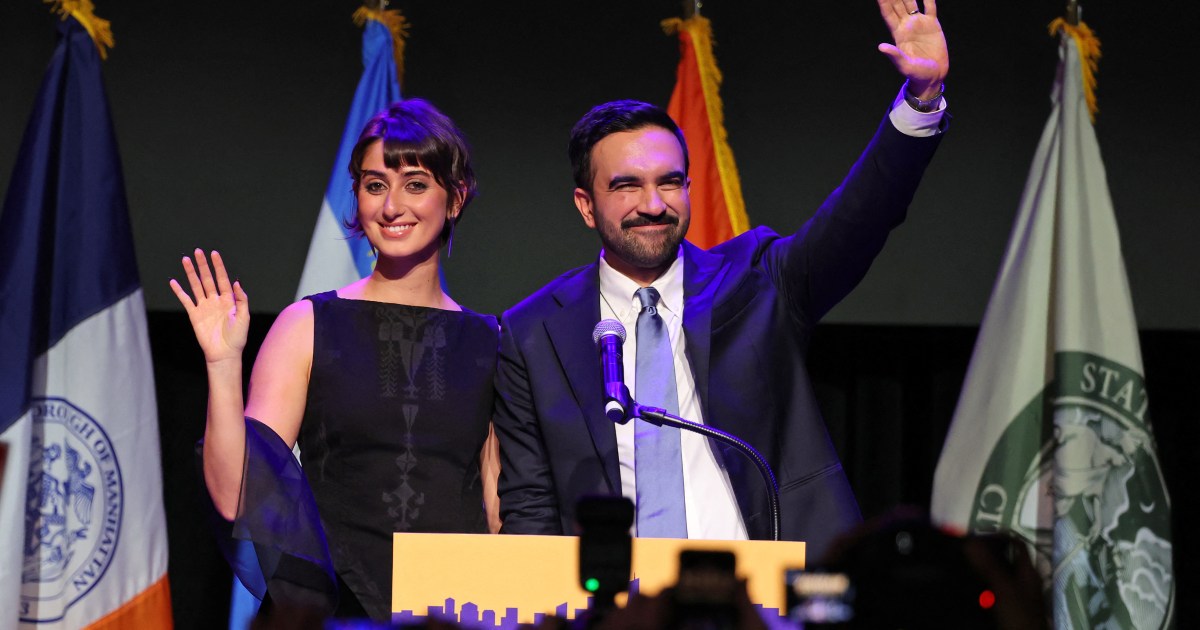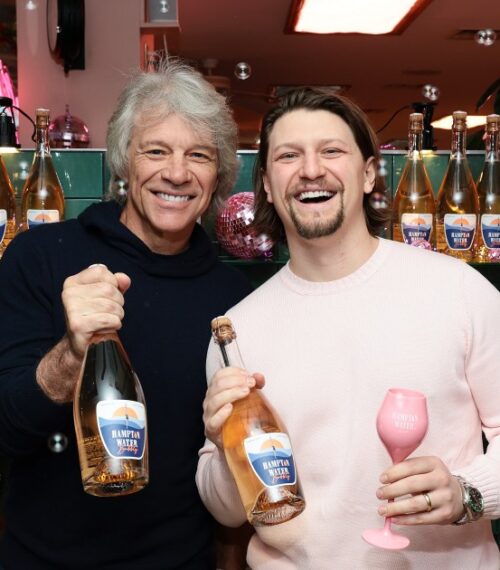New York City is about to welcome its first Gen Z First Lady, and she’s already left a bold visual imprint on the city’s political conversation. Rama Duwaji, the 28-year-old wife of Mayor-elect Zohran Mamdani, has largely preferred the background. But according to CNN, she was a driving creative force behind the look, feel, and voice of Mamdani’s winning campaign — from its vibrant color story to its digital savvy.
Duwaji’s fingerprints are all over the now-familiar brand: a striking yellow, orange, and blue palette paired with clean, modern typography that quickly became synonymous with Mamdani’s rise. She also helped guide the campaign’s social and digital strategy, shaping the online presence that amplified his message to a new generation of voters. It’s the kind of cohesive identity often seen in film marketing — instantly recognizable, emotionally legible, and built to travel across platforms.
Despite her behind-the-scenes role, Duwaji stepped briefly into the spotlight on June 24, standing beside Mamdani as he celebrated his Democratic primary victory. That day, she shared a photobooth strip of the couple on Instagram, captioning it, "Couldn’t possibly be prouder." The moment was a rare window into the pair’s private dynamic: understated, affectionate, and aligned.
The Designer Behind NYC’s Next Chapter
Duwaji’s creative approach didn’t emerge from nowhere. Born on June 30, 1997, in Houston, Texas, to Syrian Muslim parents who immigrated from Damascus, she has often credited her multicultural upbringing with shaping her storytelling sensibilities. That perspective shows in her work: inclusive, graphic-forward, and unmistakably contemporary.
Her campaign contributions weren’t simply aesthetic flourishes. The color palette, type treatments, and visual hierarchy provided a consistent identity across posters, mailers, feeds, and videos, helping Mamdani’s message stand out in a crowded media environment. That kind of visual discipline mirrors what entertainment marketers know well — audiences respond to clarity, repetition, and a compelling brand voice.
And while Duwaji’s name didn’t flood headlines, her impact was felt in the way the campaign spoke — and who it spoke to. Younger voters who live on social media encountered a political project presented with the design rigor and platform fluency they expect.
From Houston To Brooklyn: Background & Education
Education sits at the center of Duwaji’s creative foundation. She earned a Bachelor of Fine Arts in Communication Design from Virginia Commonwealth University, a program known for blending conceptual rigor with practical craft. She later completed a master’s degree in Illustration from the School of Visual Arts in New York City, sharpening a visual language that moves fluidly between editorial, animation, and branded storytelling.
That training informs both her personal artwork and professional collaborations. It also explains the campaign’s flexibility: a system that could scale from screen to street without losing coherence — much like a strong series brand or a franchise identity that adapts across posters, trailers, and social clips.
A Cross-Platform Creative Career
Based in Brooklyn, Duwaji works as an illustrator and animator with a client list that reads like a cross-section of modern media. Her portfolio includes projects with The New Yorker, The Washington Post, BBC, Apple, Spotify, VICE, and the Tate Modern, plus a growing practice in handmade ceramics. It’s a multidisciplinary profile built on clarity, color, and character — a natural fit for visual campaigns that need to connect quickly and linger longer.
According to CNN, she played a key role in designing her husband’s campaign visuals, and her influence extended to the digital arena. The result was a strategy that prized readability and reach, meeting voters where they already were instead of asking them to come to the message. In the attention economy, that’s no small feat.
What stands out is how seamlessly her editorial sensibility translated to civic storytelling. Editorial illustration draws power from distilling complex ideas into immediate images; the Mamdani campaign operated on a similar principle, with Duwaji’s aesthetic creating cohesion across formats without sacrificing substance.
A Modern Meet-Cute, Then A New Chapter
As for how Duwaji and Mamdani met, it’s a 21st-century rom-com in miniature. During a June appearance on The Bulwark podcast, Mamdani shared that they matched on Hinge — quipping there’s "still hope in those dating apps." The two made their relationship public a few years later, letting a handful of low-key posts do the talking.
They got engaged in October 2024, when Mamdani posted a photo with a ring emoji and the hashtag #hardlaunch. The couple married in early 2025 in a civil ceremony at the City Clerk’s Office before celebrating privately with friends and family. It tracks with everything else about their public presence: personal moments kept intimate, professional milestones communicated with precision.
In the months ahead, curiosity around Duwaji will likely center on the work she’s already done — and how it frames what comes next in City Hall communications. For now, the picture is clear: a Gen Z First Lady with a designer’s eye, an editor’s restraint, and a track record of turning big ideas into images people remember.
She may prefer to stay offstage, but her influence is unmistakable. In politics, as in entertainment, the right visuals don’t just support a story — they help tell it.















































































































